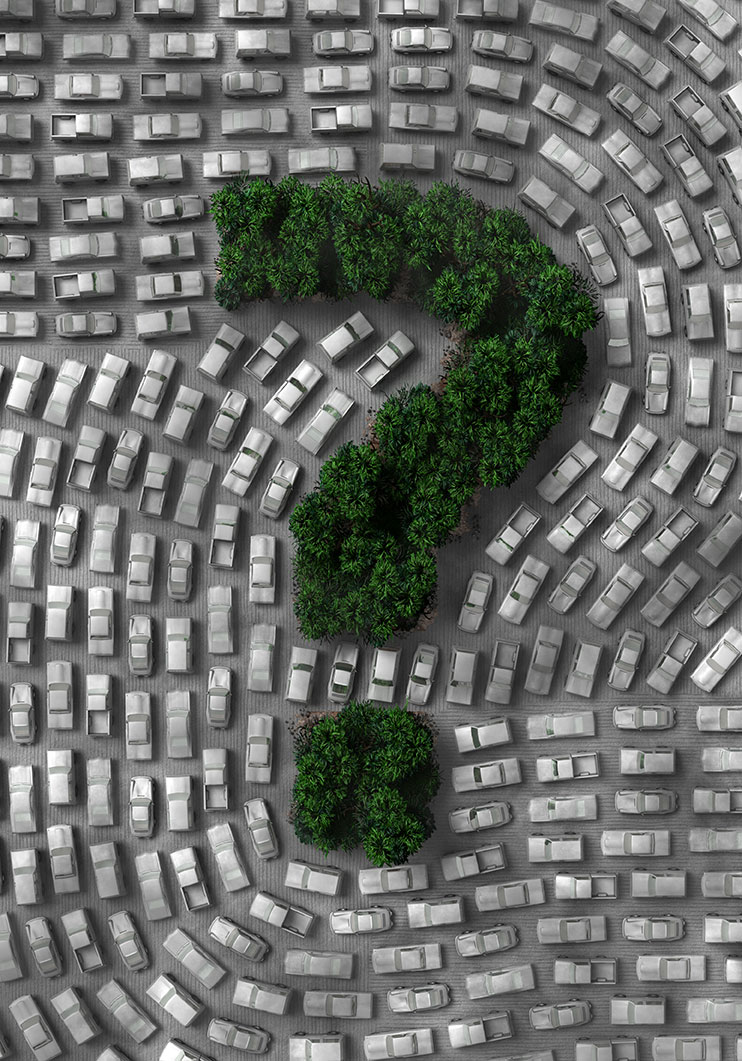
Smart Parking is taking over the parking landscape and the parking conversation wherever you turn, but does it really make you smart about parking?
We could all agree that no matter what industry read we are consuming these days they all seem to focus on the vehicle (traditional, autonomous, shared, flying…) and on “Smart Parking” (to help you find parking for your traditional, autonomous, shared or flying vehicle); suspiciously however, very few outlets (if at all) talk about being smart about the parking facility. Which lead us to our next question:
How can you talk about the vehicle, the need to park it and the smart way of finding said parking and not talk about the parking facility?
There seems to be a disconnect in the conversation, a missing link in the vehicle-parking cycle.
We read about architectural firms designing parking garages that can be repurposed when autonomous vehicles rule and pigs (or cars) fly. We read about sustainable and green building, better land use, walkable cities, heat island effect and about the time when there will be no more garages. We talk about smart parking apps to reduce pollution and traffic but we don’t hear a peep (well, maybe a small fainted one) about parking technology that is available NOW to actually contribute a great deal to all these concepts. Well, someone is not doing their homework…
Automated Parking Systems (APS), also known as Automated Vehicle Storage Systems (AVSS), have a milliard of advantages to pave the path towards tomorrow and guarantee a smooth transition between the needs of the present and the forecasts of the future.
Better land use and walkable cities can benefit from APS/AVSS’s unparalleled advantage to reduce the space devoted to parking to a third. This means more available land for relevant development (residential, commercial, green spaces) and smaller parking footprints so pedestrians don’t have to walk and entire city block to overcome the space taken by the garage.
A study published by the National Parking Association in 2009 (1) shows that, in addition to saving 3,500 gallons of gas a year, automated parking garages reduce vehicle emissions (such as Carbon and Nitrogen Dioxide) by 83%, volatile organic compounds by 68% and Carbon Monoxide by 77%. Since heat island effect has to do with mass and automated parking facilities are considerable less massive than their concrete counterparts, they are also considerable less “hot”; unfortunately they’re also less “hot” in the parking trend although they are obviously “cooler”. Automated garages also consume less energy and create less light pollution, among other green benefits that will take up another three pages.
Automated garages are also safer for people and property and offer increased architectural design flexibility to merge with the surrounding urban and architectural fabrics, they can also be repurposed for other uses or dismantled a lot easier (and cheaper) than concrete buildings. Some can even be sold in the secondary market, rebuilt in another location or even recycled (lots of metal parts!).
We could go on for days on how this technology can be used to greatly improve the urban landscape, contribute with historic preservation and connect with Smart City, Smart Parking, mobility, walkability and IOT concepts in no time; but you have to do your homework too.
(1) Samuel I. Schwartz P.E., “The Garage of the Future Must Be Green,” Parking - a publication of the National Parking Association (March 2009): 32.
About Automated Parking Corporation (APC)
Headquartered in Florida, USA, Automated Parking Corporation (APC) is a fully integrated Vehicle Storage solutions provider with over 16 years of domain expertise and successful operation in the United States and Latin America. APC is devoted to the consulting, integration, installation, maintenance and management of high-density vehicle storage projects.
Our experience combines over 25 years in the construction, elevator and automated/mechanical parking industries and we strive to improve the urban landscape and the quality of life of individuals through the use of state of the art and environmentally sensible technologies that promote social innovation.



